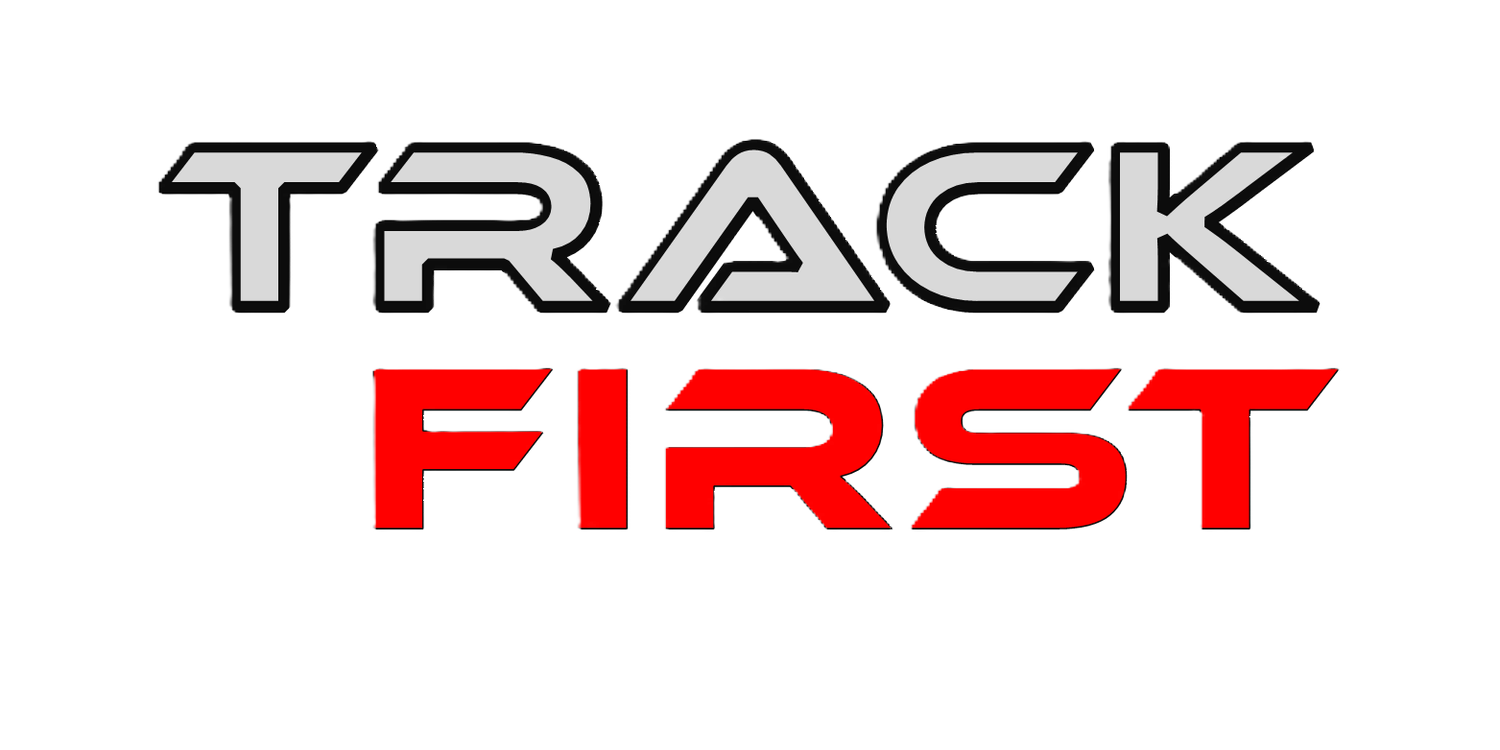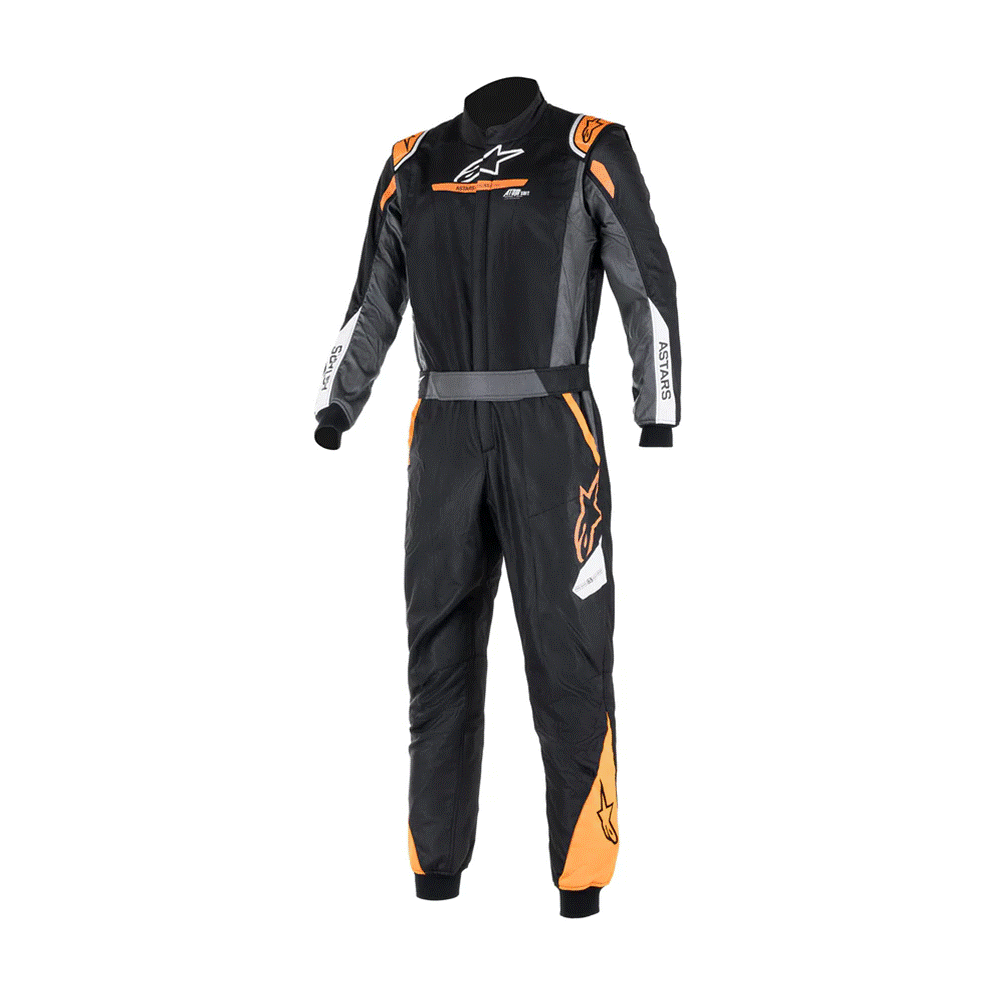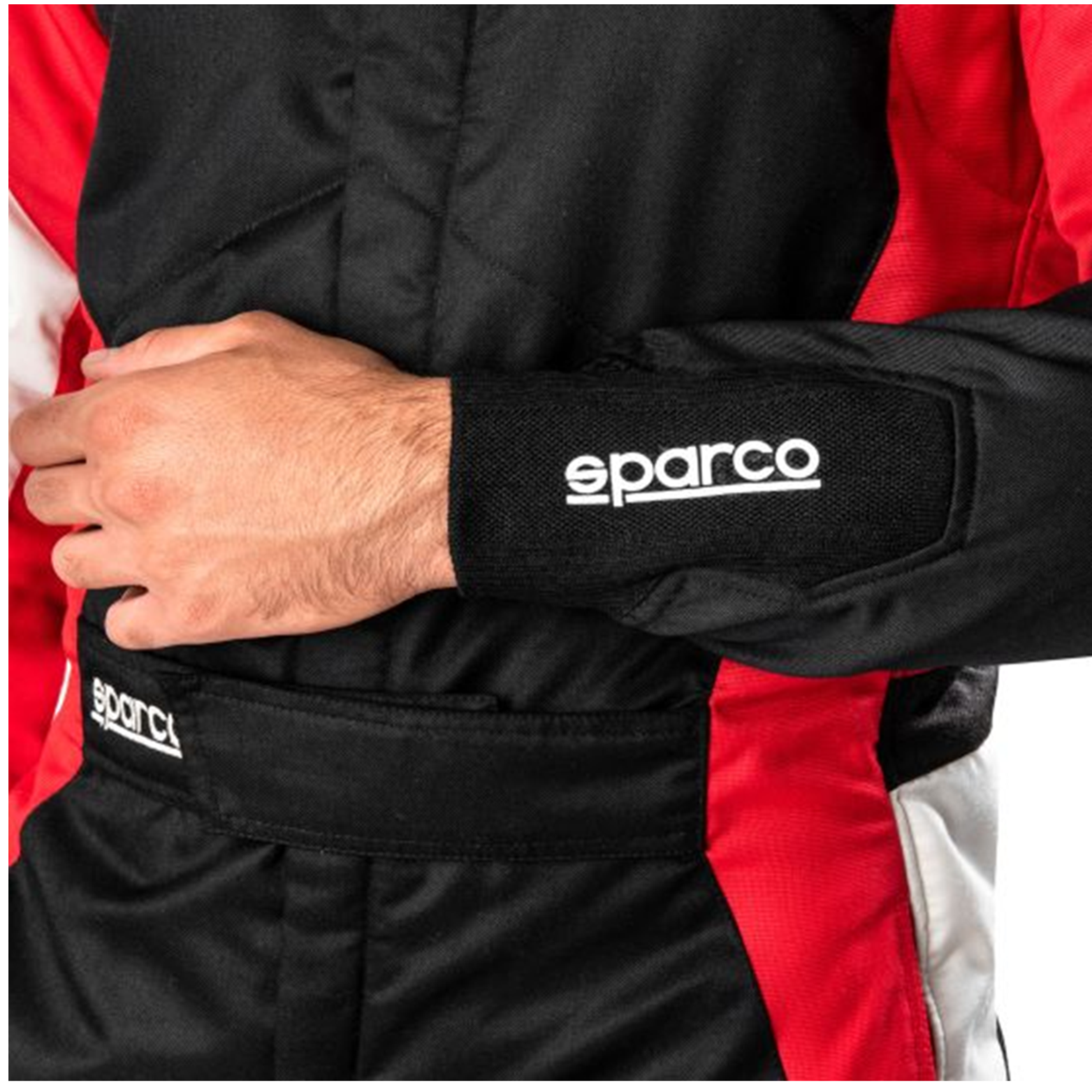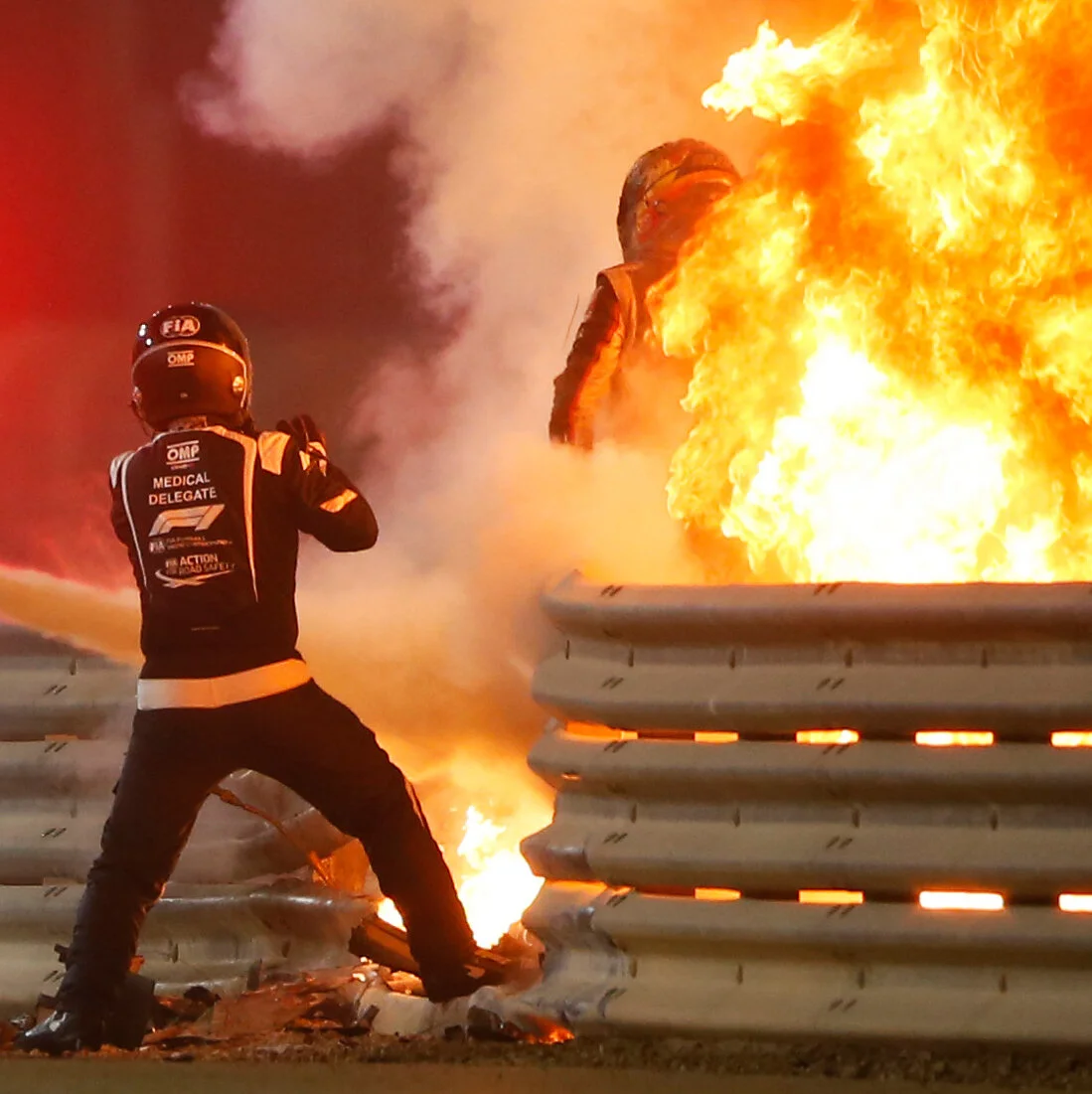
The Racing Suit
THINK SAFETY, CERTIFICATION, DURABLE, COMFORT, PRACTICAL, ERGONOMIC & STATE-OF-THE-ART INNOVATION
Know the essentials
The suit’s primary function is to protect the driver from fire.
The SFI and FIA subject the suits to rigorous tests before they receive a homologation and allowed to display their compliant tags.
It is not just the fabric that is tested for fire-retardancy. The tests include the zippers, the thread, the logos - everything.
The finished suit is tested beyond pyro hazards, and these tests include tearing, traction, abrasion, durability, strength, chemicals…
All SFI and FIA suits have passed their minimum standards, but how they achieve this will be a critical factor in your suit’s choice.
MARINA, an EU FIA suit manufacturer, demonstrates their fierce FIA testing process.
Quick summary of what you need to understand before making a decision is:-
The Fabric - Treated chemically treated or aramid?
Chemically treated suits will be heavier and the treatment is not permanent, however, they will be significantly less expensive than aramids. The characteristics of suits constructed with aramid fabrics are permanent. The blends and composition of an aramid fabric can significantly increase the suits characteristics including thermal resistance, weight, appearance, breathability and flexibility. Nomex® use is popular. (Scroll down for full explanation)The FIA and SFI standards as reflected in their homologation tags.
FIA tags are placed externally on the back of the suit’s collar and on the inside of the front opening. SFI tags are placed externally on the suit’s left sleeve. These tags ensure that your racing suit complies with the safety standards set by the FIA (Fédération Internationale de l'Automobile) for international motorsport or the SFI Foundation for use in North America.Commonalities - and must haves as required by the SFI and FIA.
The list includes a Nomex® lining, tight cuffs, closed collar, fire-resistant zips and shoulder handles that can be gripped.The weight of the suit
The GSM (grams per square meter) varies with the thickness of the actual yarn (fiber), the composition of the yarn (fiber) and the weave of the fabric. Such as 300/360/gr/sqm, or 390g/sqm. Bigger numbers reflects a heavier suit. The greater the percentage use of ‘exotic’ fabrics (usually Nomex®) the lighter the suit will be.Features which adds to driver comfort, mobility, performance, focus and safety.
Including, stretch panels, full floating sleeves, pre-formed cut and fit, ergonomic pockets, a fabric that permits printing of logos and patches….Check the rules.
Race sanctioning bodies will clearly state their apparel safety rules. Most US groups accept SFI certification. International organizations, such as WEC, IMSA, will require FIA homologations. Even if the race series is held in the US.
Groups that allow SFI Spec 3.2A/1 (single layer suits) will also require these suits be worn with FR underwear.
SCROLL DOWN TO KNOW MORE ABOUT…Fire-resistant or fire-retardant - not the same
The fabric - aramid or chemically treated
FIA, SFI standards
Suit commonalities
Weight
Recommended features




THE FABRIC - Aramid or Chemically Treated?
A certified racing suit’s fabric will either have been woven using an aramid fiber or made with a chemically treated organic fabric (FR.)
ARAMIDS are synthetic, technical fibers that have inherent properties including heat & flame resistance, low thermal conductivity, lightweight, resistant to abrasion, own a high tensile strength, have resistance to organic solvents and chemicals oils.
The fire resistant properties of an aramid fiber remain with the fabric and cannot be washed out.
Avoiding the complicated science of fire-retardant fiber compositions, it is simpler to state that there are multiple fire-retardant aramid fibers used in safety clothing. For motorsports Nomex® from DuPont™ is the preferred (meta-aramid) material.
Most aramid racing suits will be made with 100% Nomex®, or blended with another aramid fiber; or an organic material; or a fiber that has other benefits for driver comfort and performance - such as elasticity, breathability, anti-static behavior...
The blend and the degree of Nomex® used in the fabric will decrease or increase the price of the suit. Nomex® is proprietary and expensive.
The blends and composition of an aramid fabric can significantly increase the suits characteristics including thermal resistance, weight, appearance and flexibility.
Stretch panels are manufactured using highly, technical aramid fibers that have been developed for elasticity and breathability. Their inclusion in a suit benefits the driver but can significantly increase the price of the suit.
THE CHEMICALLY TREATED (FR) FABRIC (usually cotton,) gains its flame resistance from being treated with a flame resistant chemical. The process produces a lower cost fabric. The downside the treatment is not permanent and, to meet the SFI & FIA standards, will be heavier. Frequent washing, regular use, exposure to certain elements causes the suit to lose some degree, or all, of its flame resistance. This can start at the eighth wash.
Proban FR cotton, Pyrovatex FR cotton, Indura FR cotton are all registered brands frequently used in the manufacture of ‘wallet friendly’ racing suits.
FR cotton suits are always heavier. Cotton is inherently heavier than synthetic thread. In addition, to pass the thermal tests (TPP,) multiple layers will have been used.
Remember no matter the fabric all the suits have to pass the same SFI and/or FIA standard tests. It’s how they achieve this which leads to the significant differences and costs of the suit.



FIA and SFI standards
Safety Certifications: Ensure that the racing suit complies with safety standards set by organizations such as the FIA (Fédération Internationale de l'Automobile) for international motorsport or the SFI Foundation for use in North America. Suits with legitimate and current certifications offer the best fire and safety protection. Be vigilant, fraudulent copies do exist.
SFI certified suit tags will be found on the suits left sleeve - easy visibility for track inspectors.
FIA certification and date Tags will be found on the back (external collar) with the suits unique hologram and other information on inside the zipper channel.
Note, currently the SFI lists no expiration dates for their racing suits. However, the suits can be rejected by sanctioning bodies for various unsafe conditions, such as frayed edges, holes, broken zips…
The latest FIA 8856-2018 homologation for racing apparel now displays an expiration date - it is 10 years from the date of the suits manufacture. The FIA thinks safety first. They believe 10 years is generous, and that most suits regularly worn have a much shorter life span. Dirty, stained, sun-faded and over-worn suits reduces the suits fire resistance.
The FIA testing criteria is more rigorous. They suits has to pass more than 10 different tests beyond its fire retardancy. The FIA also insists that the fabric is washed 15 times before it is tested. This is why FIA manufacturers do not homologate FR cotton.
Neither the FIA or SFI test the suits in house. For example, the FIA issue their demands and the manufacturers comply. Their finished suit has to be presented to a limited number of (country specific) FIA approved testing facilities. The results are then submitted back to the FIA governance for approval and to receive permission to manufacture the suit for a stated number of years. Any diversion from the original design, construction and/or fabric composition can force the manufacturer to repeat this process.
The FIA and the SFI often update their demands. Unlike SNELL, this does not happen at regular intervals, instead, when there is empirical evidence that a safety upgrade is needed or that the use of new technology will benefit the driver’s safety. For example the latest FIA 8856-2016 mandated an overall 20% increase in fire-retardancy.
Remember all tagged suits pass a minimum safety standard. The better brands well exceed this along with more features.

Suits must have a shoulder 'grab-handle.'

Zips have to be contained in a fire-resistant channel. Belts must be secured with fire-resistant velcro.

Suits must have a rated fire-resistant inner lining. Also created for additional driver comfort and an added air pocket.
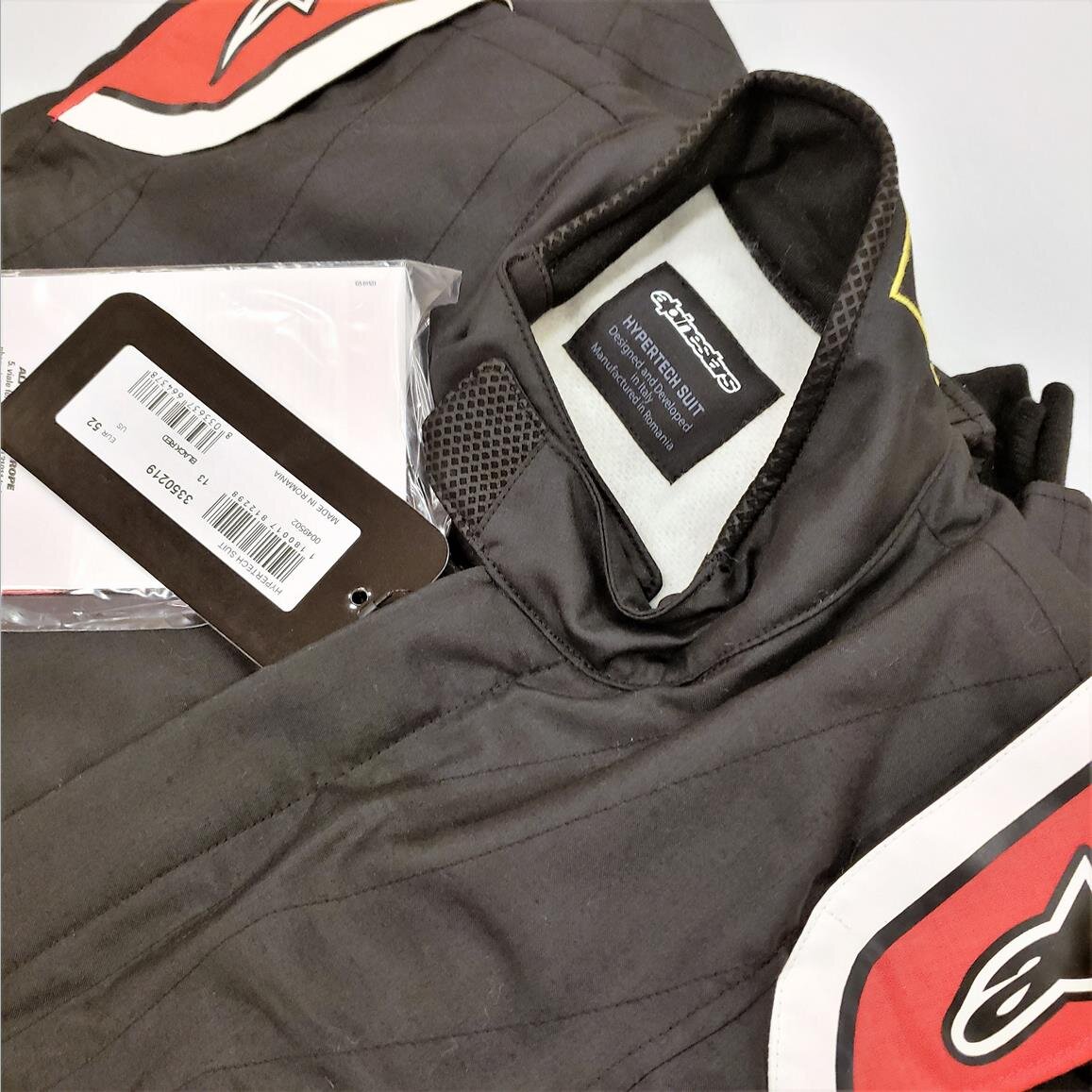
The closed, secured collar.

The SFI tag must be displayed on the outside of the left sleeve

The FIA tag has to be incorporated onto the back neck of every suit.
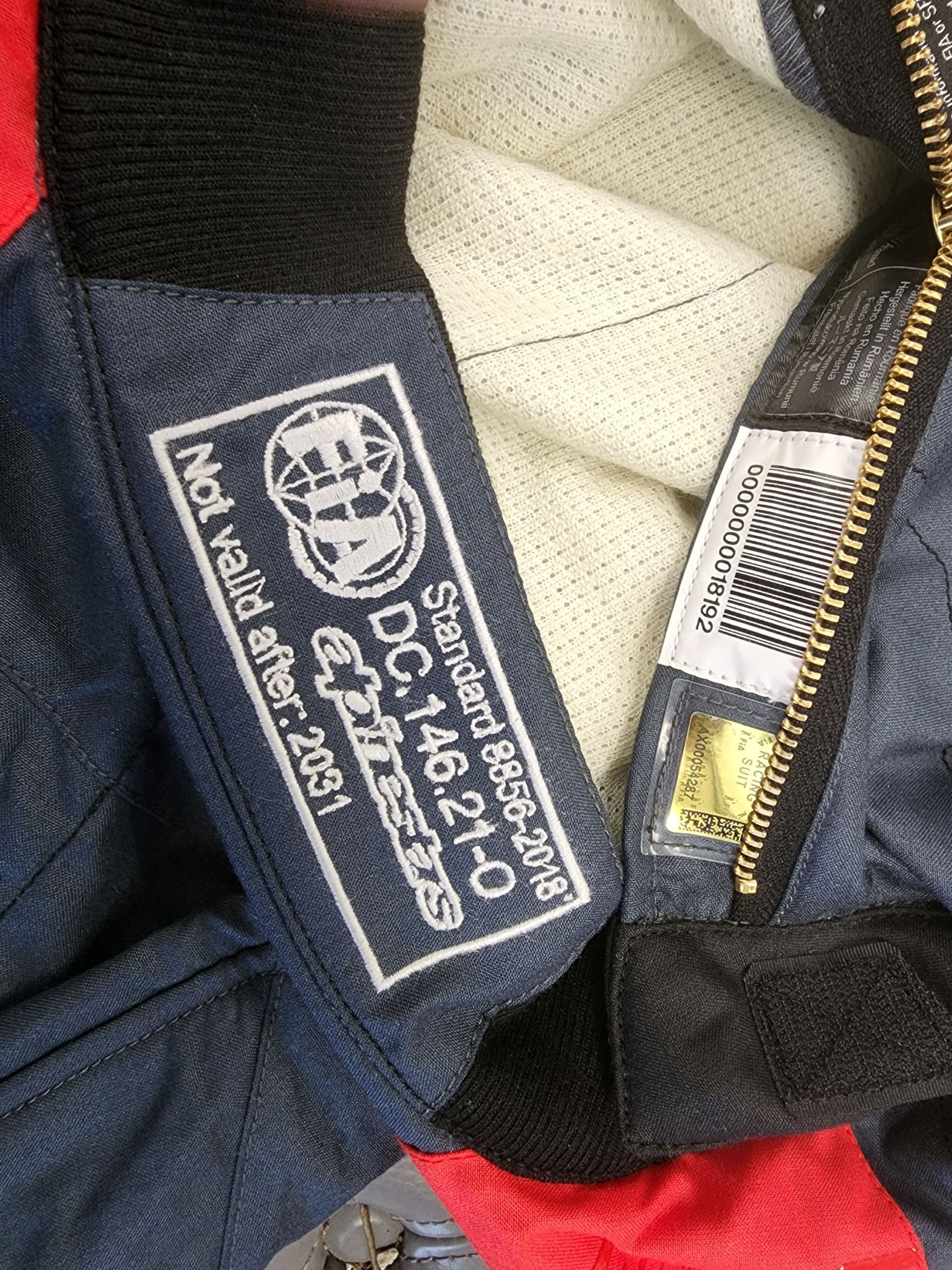
Commonalities - FIA & SFI suits
Tight, elastic cuffs at the wrist and ankles - required to prevent flames from moving up the arms and legs.
Note, it is always safer to wear a loose fitting suit. Air layers slow the progress of heat passages and add to overall TPP. FIA 8856-2018 mandates a suit must survive a minimum of 20 seconds before the wearer suffers a 2nd degree burn. The FIA underwear can add another 5-7 seconds to this number. Air pockets between the layers add more seconds.
Sparco’s patented Hocotex suits have 60,000 micro air bubbles sewn into the fabric. As a result it can successfully claim to be the only FIA tagged, one-layer suit on the market. A customer favorite because it is extra light.
A fire-retardant lining - usually Nomex.
Worn for added protection and driver comfort.
Hidden, protected zips that also have to pass FR tests.
We recommend choosing a suit with double-zippers. This allows a frontal entrance-exit for cooling-suit tubes
Epaulettes - shoulder handles
They are ‘grab-handles’ for safety crews, corner workers and all who are trying to help a driver quickly exit a crashed vehicle.
A closed collar - to inhibit the passage of flames
Visible tags.
SFI is on the left sleeve, FIA on the back neck.
What about one piece or jacket and pants?
Road racing sanctioning bodies, for safety reasons, only allow one-piece suits. Although a jacket and pants combo do have a long overlap (10” plus) it is still a pathway for flames to the body. Drag and oval/dirt racing do allow jackets and pants. Cost is often a factor in this decision. For drag racers it is more about keeping cool, since the drivers do spend a long time in their car before they hit the strip.
Note, American racers have a preference for the ‘boot’ cut styled suit - no cuff look. However, the cuff exists inside the lower pant leg. These suits are made solely for the US market and, as a result, the the suits only have the SFI homologation.
Air pockets - created in the construction of the fabric or in the suits construction and usually achieved with layers and fabric quilting. Air pockets increases the suit’s TPP rating - slowing the progress of heat and flames.




WEIGHT
‘How light is the suit’ is usually the first question a customer will ask us, especially if they are a racer.
The weight will be written as 300/360/gr/sqm, or 390g/sqm. - grams per square meter.
The GSM (grams per square meter) varies with the thickness of the actual yarn (fiber), the composition of the yarn (fiber) and the weave of the fabric
Not all suits display a weight. If it does not, that usually indicates that it is not a light suit, or that the weight is not a focus selling point.
The lightest (non-custom) suits on the market today weigh around 265g/sqm (Alpinestars Hypertech V2 suit.)
The weight reduction results from an increase percentage use of aramid synthetic fibers in the production of the fabric.
A suit’s price increases with grams lost, since the more expensive (exotic) and technical fabrics have been used.
Thermal and flame retardant synthetic fabrics are light because they are produced from very fine spun fibers. Fibers that have been formulated with fire-resistant properties.
Other factors that reduce a suit’s weight include: loss of pockets, waist bands; printed logos; no embroidery; reduced quilting; special light zippers…
Racers can easily overheat inside their vehicles. Choose the lightest suit that fits into your budget.
FEATURES

Lower Back Stretch Panel Sparco Suit

Sample Rear Stretch Panels Alpinestars FIA Suit

Crotch and Inner Thigh Stretch Panels

Showing Inner Sleeve Stretch & Breathability Panel inserts Sparco

Sample Elbow Stretch Panel Sparco

Full Floating Sleeves

Contour Features Suit Sleeve

Hidden Suit Pockets
Recommended for optimum driver comfort, movement and increased performance
Stretch panels: Used to aid movement and breathability.
Most often used on the lower back, around the crotch area and under the arms. This elastic, aramid fabric is expensive so its use will always add to the suit’s price.
Full floating sleeves: Aids full arm, upper torso movement. Unless you have a custom made suit, we recommend this feature.
Pre-formed sleeves and legs: An ergonomic cut for efficiency, driver comfort, style, weight reduction and avoids fabric ‘bunching.’
Ergonomic hidden pockets
Reduced weight (see above)
A light color. It makes a difference. Darker suits do absorb more heat. Lighter color suits do show the dirt. BUT we now have MOLECULE a proven Nomex cleaner.
Most budget-friendly suits are dark. It is a practical choice since the manufacturer knows these drivers are more than likely to be working on their cars, as well as racing. The compromise is a gray suit, some brands call it anthracite.
The Fabric composition. The more budget-friendly suits use fabrics that are a mixture of organic threads (usually cotton) and an aramid thread. Because of the organic content, these suits will be affected by sun bleaching. Protect them by avoiding UV rays.
Roman Grosjean's suit protected him for 27 seconds

Our customers agree.
To convince other of the benefits of his new, Nomex racing suit, Bill Simpson set himself on fire in his suit!

The suits fabric have to have other properties in addition to being fire-resistant.
Each suit has its own characteristics, fit and style
What's coming - fully stretchable, aramid fabrics
New technology to aid driver cooling.
Custom suits - more choices and configurations are coming from the major brands.
FLAME RESISTANT OR FIRE RETARDANT? There is a difference.
Fire-Resistant:
Fire-resistant materials are those with innate properties that make them resistant to catching fire when exposed to open flames or heat sources. (We refer to these suits as aramid.)
Fire-Retardant:
Fire-retardant materials are those that have been treated with specific chemicals or coatings to reduce their flammability. This slows down (retards) the spread of flames when exposed to fire or a heat source. While they may still burn under certain conditions, they do so at a much slower rate and a with reduced intensity compared to untreated materials. (We refer to these suits as chemically treated.)
Key Differences:
Inherent vs. Treated: The fundamental difference is that fire-resistant materials have natural resistance to ignition and combustion, whereas fire-retardant materials are regular materials that have been treated to enhance their fire resistance.
Behavior in a Fire: Fire-resistant materials are less likely to ignite and will not burn easily. In contrast, fire-retardant materials may still burn but at a slower rate and with reduced flame spread and intensity.
When choosing a suit the terms aramid or chemically treated are relevant to your budget and comfort but not to the suits safety standard. A SFI or FIA tagged suit has passed similar and rigorous thermal tests - the suits are only judge the on results. The various thermal tests exist to prove the suit has achieved the required TPP or Thermal Protection Protection Rating. The TPP rating states, in seconds, the length in time before the wearer receives a 2nd degree burn. The SFI and FIA authorities clearly state the TPP rating the suits must attain for a set homologation.
In conclusion.
Choose the lightest suit with the most added features that your budget allows - your body will thank and reward you.
Never skimp on your safety. Dirty, well worn, holed, frayed, old suits are a pyro hazard and will not fully protect you.
Benefit from the upgrades, added comfort and the latest innovative technology offered by the suit manufacturers
Aramid suits produce lighter suits with permanent flame and thermal resistance.
Check each manufacturer's’ individual size chart - they are not inter-changeable.
Contact us to understand the difference between each suit brand.
Protect your suit with proper maintenance and it can survive a decade.
